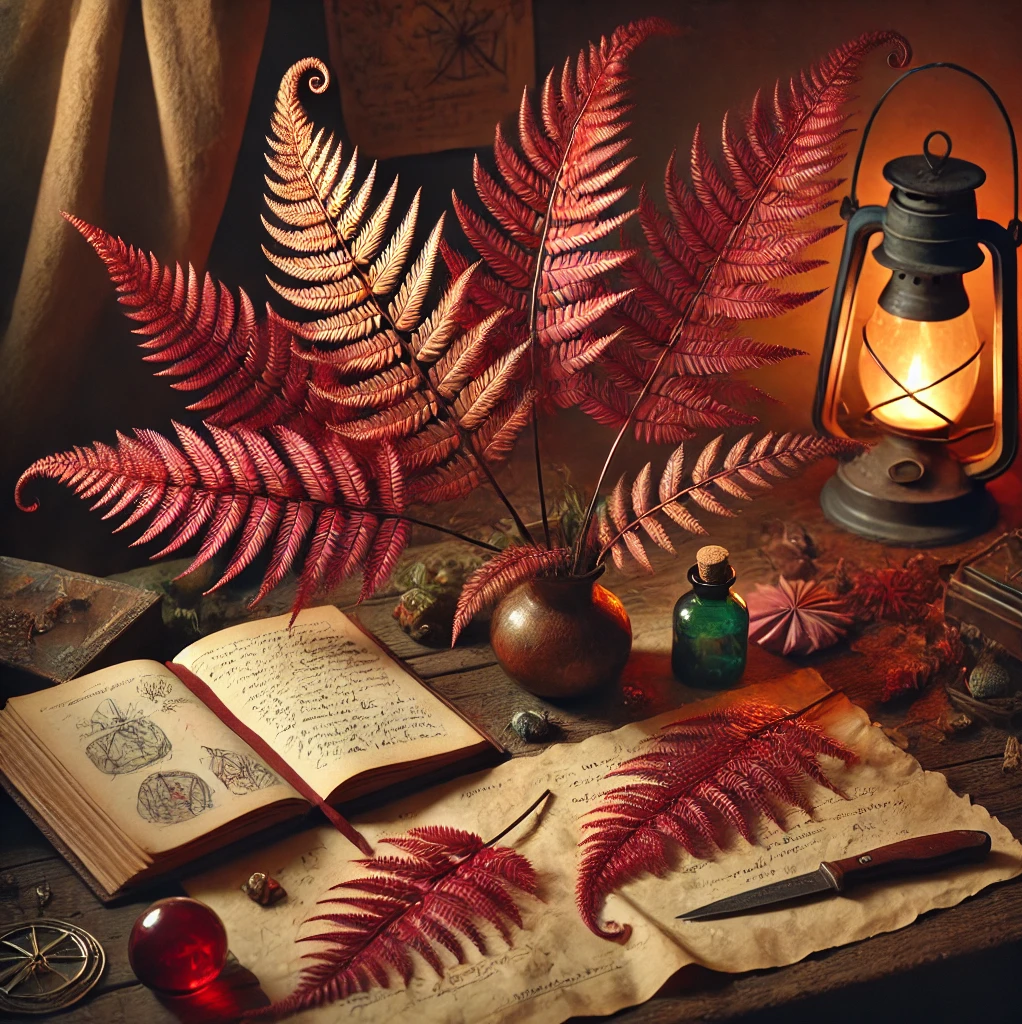Visual Description
The Phoenix Fern is a breathtaking specimen, easily recognized by its broad, feather-like fronds that unfurl in delicate layers. The coloration begins in a deep crimson along the stem and fades into a soft, pale red toward the tips. In full sunlight, the fronds shimmer with a golden iridescence, as though touched by firelight. At maturity, a single fern may span over five feet in width, making it one of the more visually commanding plants found in Restoration-rich biomes.
Habitat and Growth
Phoenix Ferns thrive in damp environments with high mineral content. Their preferred habitats are humid swamps, geothermal wetlands, and even the rocky, heat-infused soils of ancient volcanic slopes. Though they favor moisture, they are remarkably adaptive—able to root in surprisingly dry ground so long as the area receives consistent sunlight. The plant reproduces through microscopic spores released from the underside of mature fronds, often riding the warm updrafts found in its native terrain.
Alchemical Use and Preparation
Renowned for its potent regenerative properties, the Phoenix Fern produces a vivid red-orange gel when its fronds are crushed or bruised. This gel is rich in life-essence and is commonly used in topical preparations to accelerate healing, particularly for sun-scorch, bruises, and shallow lacerations. It is also an effective agent for reviving wilting plant life or treating blight in magical crops.
The gel is most potent when extracted in the late afternoon, when the sun's rays intensify the plant’s shimmer and, according to experienced herbalists, "ripen the fire within." Once harvested, the gel must be quickly sealed in airtight glass or wax-lined containers, as exposure to open air causes rapid dulling of its properties.
Warnings and Curiosities
Despite its healing nature, the Phoenix Fern’s gel is not without hazard. Direct skin contact may result in temporary redness or mild irritation, especially for those with sensitivity to alchemical stimuli. Additionally, a damaged frond will wither almost instantly—curling into itself like burnt paper—but regrows within a single day, a phenomenon that makes overharvesting difficult. Observers have noted this regenerative cycle continues even when the plant is partially uprooted, giving rise to numerous superstitions.
The plant’s golden shimmer can be mimicked by the Ruby Lace Fern, a less potent relative that lacks the telltale citrus tang when bruised.
Historical Notes and Folklore
Legends hold that the mythical Phoenix bird once nested among these ferns, drawn to their radiant heat and regenerative essence. Some say the gel was once infused with the bird’s tears, granting it unmatched power in ancient healing rites. In certain volcanic shrines, priests of old would gather Phoenix Fern fronds before ceremonial rebirth rituals, burning the withered cuttings as a symbol of restoration through flame.
Even now, it is common for the sick or injured to be treated in rooms adorned with hanging Phoenix Ferns—not only for their alchemical use, but in hopes of summoning the plant’s quiet, radiant strength.
Lanternlight Preparations
Evening is the preferred hour for Phoenix Fern work, when the fronds shimmer brightest and the gel flows cleanly from the bruised veins. In the quiet glow of lanternlight, alchemists prepare salves and tinctures by hand—careful not to waste a single drop of this radiant essence.
“If you rush the harvest, the fern remembers. Treat it with care, and it will return the favor—sometimes more than once.”
— Caldra Wren, The Emberleaf Journals
Field Notes from Alchemist Caldra Wren
Excerpt from The Emberleaf Journals
The fronds shimmered just as the light slanted low—red melting into gold like the edge of a forge. I gathered them while the heat lingered, crushing two fingers’ worth into a salve for a miner’s cracked rib. It worked faster than tinctures I’ve used in the capital. I suspect this region’s ash content sharpens the gel.
Worth noting: the fern I plucked from regrew by morning. I marked it with a blue ribbon. Let’s see if it remembers me.



Comments